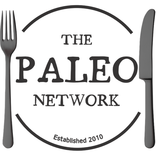62 sneaky ingredients out to mislead you
It’s common knowledge that sugar is to be avoided, but if only it were that simple. Did you now there are at least 62 words food manufacturers can use, instead of simply saying sugar?
Many of the words on the list, such as Golden syrup and HFCS may be obvious no-no’s, but what about less common words, such as Ethyl maltol and Panocha. Would you immediately know that these ingredients were essentially sugar?
Agave nectar
Barbados sugar
Barley malt/ Barley malt syrup
Beet sugar
Brown sugar
Buttered syrup
Cane juice/ Cane juice crystals
Cane sugar
Caramel
Carob syrup
Castor sugar
Coconut palm sugar/ Coconut sugar
Confectioner’s sugar
Corn sweetener
Corn syrup/ Corn syrup solids

Date sugar
Dehydrated cane juice
Demerara sugar
Dextrin
Dextrose
Diastatic malt
Diatase
Ethyl maltol
Evaporated cane juice
Free Flowing Brown Sugars
Fructose
Fruit juice/ Fruit juice concentrate
Galactose
Glucose/ Glucose solids
Golden sugar
Golden syrup
Grape sugar
HFCS (High Fructose Corn Syrup)
Honey
Icing sugar
Invert sugar
Lactose
Malt/ Malt syrup
Maltodextrin
Maltol
Maltose
Mannitol
Mannose
Maple syrup
Molasses
Muscovado
Palm sugar
Panocha
Powdered sugar
Raw sugar
Refiner’s syrup
Rice syrup
Saccharose
Sorbitol
Sorghum Syrup
Sucrose
Sugar (granulated)
Sweet Sorghum
Syrup
Treacle
Turbinado sugar
Yellow sugar
Whilst clearly it’s best to go for natural foods that don’t need labels, I can’t ever imagine a day where packaged foods aren’t commonplace. So surely those who buy them should be armed with full, honest information about the contents of these products, so they can make an informed decision?
It’s a shame manufacturers are allowed to be so misleading. Wouldn’t it be simpler if they perhaps had to use the word sugar, and follow that with the specific type of sugar? I can imagine many time-poor households trying to make good food choices – despite their best intentions, they can easily end up buying sugar laden foods.
Sugar can be a really confusing topic, especially when even healthy blogs use natural sugars in recipes (I put my hands up to this too, though in my recipes the natural sugar tends to be an optional addition). But are natural sugars actually any better for you – I’ve written the definitive guide to paleo sweeteners to help clear this up.
What’s your take on these sneaky misleading alternative words for sugar?






